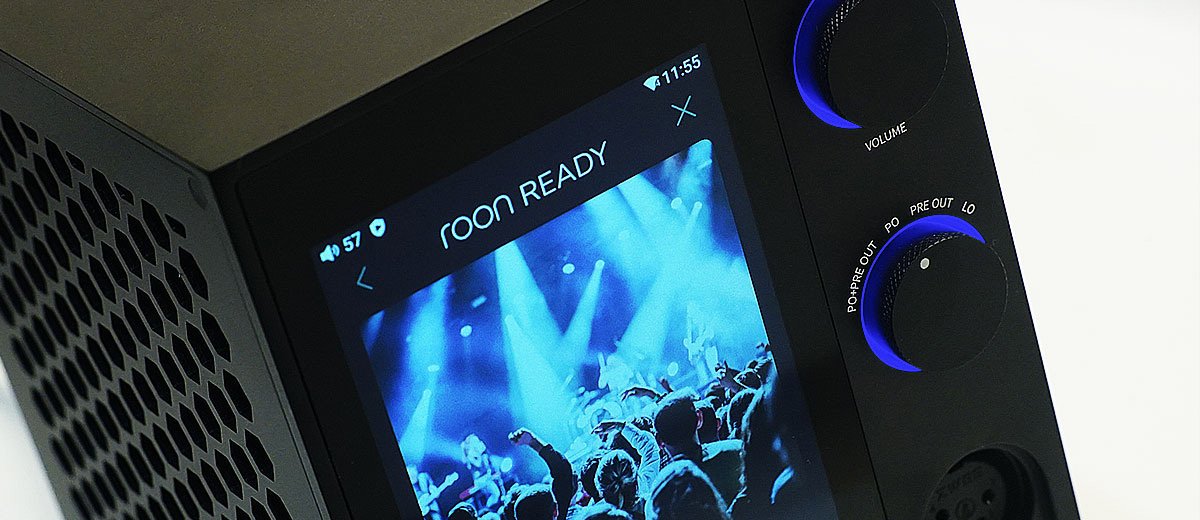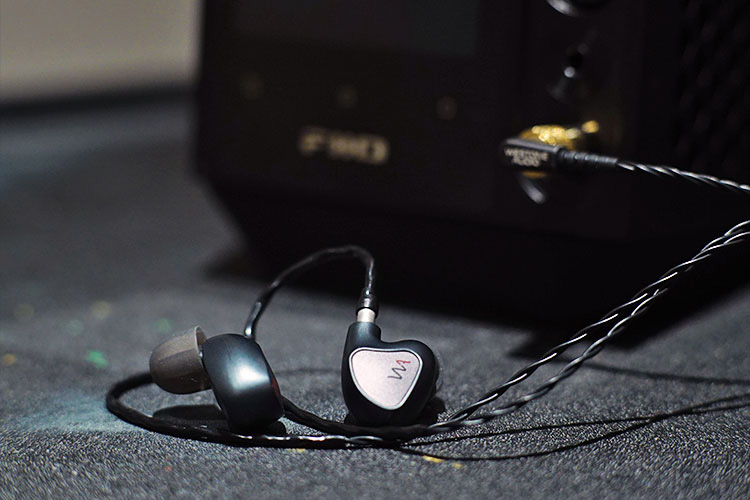Sound Impressions
The R7 is basically an M-series FiiO DAP with redesigned, upgraded power components as its backbone.
The capacitors in the audio pathway are upgraded for enhanced tonality and performance, such that the R7 has superior sound quality and decent performance numbers even when it has one single DAC chip only.
The dual THX AAA 788+ chipsets also play an important role in facilitating the well-balanced, transparent yet impactful output, similar implementations have been promising so far and the output remains quite undistorted and detailed even when pushing the volume up.
The 4.4mm output also XLR output are obviously more powerful than the 6.3mm SE output and could unleash the R7’s full performance.
On the 3.5mm output, it sounds quite clean and renders a firm vocal image, though you could notice the separation power and staging performance are not as strong as on balanced output.
The below impressions are mainly given on the balanced output pairing with various IEMs and headphones on a balanced connection.
Timbre
The R7 has a deep and rich bassline with an expressive decay, that balances well the ample output power to sound more natural while maintaining satisfactory dynamic range.
Listening to darker, lower-pitch voices sounds full-bodied and energized, with transients and overtones in the upper vocal frequencies elevated to bring about a stronger sense of definition; lighter voices are also smoothly presented with satisfactory penetration power.
The slightly V-shaped tuning is friendly with different genres of music and with streaming services, and the Equalizers and filters onboard can always be tweaked to fine-tune the output signature without causing noticeable distortion.
On the higher gain modes, the R7 has a lot of energy in the low end. The bass has good density and an airy decay, while mid-lows sound full-bodied and quite intimate, smoothly extending to the treble that captures well transients and overtones.
This works well for cans and IEMs that are more rounded up to the top. Such reminds me of K9 Pro ESS technicalities and the R7 feels more colored in the mid-range frequencies and more forwarded with vocals.
Playing back local files on the R7 yields the best quality and when streaming or playing back from the PC using the R7 as a DAC, it feels a tad bit warmer in the output.
Staging & Dynamics
With the two ends boosted, the R7 kicks deep and extends well, such contributes to a more spacious presentation especially shaping the perceived depth more 3D.
As mentioned, the bass decay is quite expressive and you can hear the drums or the subs vibrating and dispersing into mid-air airily, being nicely controlled at the same time without bleeding over the mids.
Some of the details in the mids may be sacrificed but it colors the overall output more dynamic and smoother.
Treble transients are well captured on the R7 and the upper vocal frequencies are energized to sound more forward. Even with a lot of power in the output, sharper tones aren’t harsh on the R7 but actually quite polished and textured. Treble overtones are weighted just right to not feel shy and without getting hot or harsh.
With DSD or other well-mastered tracks of higher resolution, the mid-range sounds more resolved. However, with a lossy track, it feels more compressed and less layered.
Synergy
Power
Having 3W+ in the output the R7 can power almost any IEMs and Headphones easily, even the rather demanding Moondrop Venus Planar Headphones. With 5 different levels of gain control, you can easily match different gears and the background noise control is decent.
Pairings
Starting with sensitive IEMs like the Elysian Acoustic Labs x Effect Audio GAEA only low gain is needed, little hiss can be heard in the background and the IEM is driven to sound quite firm in the mid-lows.
The tuning on the R7 boosts the lower end of the spectrum and seems to be matching well IEMs that have a more V-shaped or treble-leaned tuning to sound fuller in the lows, also pushing the vocal more forward. This results in the perceived stage being more intimate and stereophonic than using weaker outputs.
The R7 helps breathe more vividness and power into the GAEA which sounds more laid-back and softer when power is insufficient, at the same time the treble is nicely controlled to not peak or suppress dynamic range.
The final A8000 which exhibits an even more treble-leaned signature aligns with the impression above to sound quite controlled and resolving on the R7, with the mid-lows colored more prominent and lusher.
With the Westone Audio MACH 30 3-driver IEM we recently covered, at a lower gain, it sounds slightly compressed and I am turning to higher gain levels to drive the IEM for stronger dynamics. The vocal is full-bodied with this pairing, also firmly imaged and more forward.
There is enough swing and extension for deep bass and far-stretching vocal harmonics to be preserved and the MACH 30 remains quite balanced and naturally articulated, with a welcoming hint of warmth that draws the attention mostly to the vocal part.
Power
With that much power in the output, the R7 certainly has some advantage to make power-hungry IEMs like the MACH 30 shine, without making it sound too clinical.
I have also tried pairing with some dynamic IEMs which require a responsive amping stage and require more voltage swing to achieve firm, agile bass, and better clarity. The R7 here is doing a good job to achieve this and despite the small size, it can handle headphones pretty well.
Switching to the Moondrop Venus, which is a rather power-hungry planar headphone, the R7 at the highest gain on 4.4 balanced output colors is very punchy and firm in attack, with a moderately fast decay in the bass.
There is some warmth in the mid-lows that makes the output engaging and sweet, and the bass feels satisfactorily responsive together with well-defined transients in the treble.
Select Comparisons
Shanling EM5
$849.99
Technical
The EM5 from Shanling uses the now rarer AK4493 DAC chipset with an OPA2211 as LPF and an OPAMP(TPA6120A2) +BUF amping stage that is commonly seen in Shanling’s designs.
The EM5 is capable of outputting 1.62W on its XLR 4-pin output, measured on turbo gain mode and its output impedance is slightly high at 1.6ohm on balanced output.
The power output on the EM5 is quite a bit lower with the R7 capable of outputting 3650mW at 32Ω when switching to the highest gain option.
At the same time, the output impedance on the R7 is <0.5 which is much more friendly with very sensitive items including various CIEMs.
Design
At 238mm x 188mm x 55mm the EM5 is quite a bit bigger than the R7, and its screen has a sidewards placement. I am not too used to the landscape orientation when not viewing videos, but this helps the design feel sleeker.
If you do not use the app control function, then the EM5 must sit on the desk or else it may be clumsy to navigate on the screen on top. In this sense, the R7 feels much more user-friendly and closer to a smartphone experience with its straight-up orientation.
The EM5 uses a custom UI on Snapdragon 430 and it isn’t as smooth in operation as with the R7. The R7 is much more friendly as you can install other music apps and quite a few of them are designed to work best in portrait orientation.
The EM5 would still be a decent device to connect to the hi-fi system but if it is for the desktop being used as a standalone device with speakers and cans/IEMs, then the R7 feels much more suitable in design.
Performance
The EM5 has an engaging tuning that renders the bass punchy and airy, the vocal has good fullness and articulates smoothly to the well-rounded treble zone.
There is enough power to drive power-hungry cans like the Venus to sound quite opened up, while the rather mid-centric tuning is forgiving with lossy formats and works quite well with streamed music, with satisfactory resolving power which reminds me of the Shanling M6’s vocal-centric colorings.
The R7 is comparatively more balanced in tonality and has a more powerful, defined output which helps capture the transients clearer, kicking into the output higher density and a firmer, more distinct vocal image.
The vocal is not as forwarded and strong in the body as the EM5 but it feels more defined, natural, and textured, with harmonics and air better preserved as the treble frequencies are not as attenuated.
It is also much easier to access different EQ/filtering options on the R7 that could color the output more engaging, especially with speakers.
Soncoz SGA1 + LA-QXD1
$649 + $230
Technical
The current combo on my desk as captioned is not exactly an integrated machine but a DAC + amplifier combo, and they are priced slightly higher together.
The USB-powered LA-QXD1 uses ES9038Q2M, while the SGA1 features the MUSES 72320 volume controller chipset with precise 0.25dB/step control.
It also uses a Toroidal transformer, big coupling caps, and a sophisticated amping section utilizing the OPA164s and OPA1622s. The SGA1 can output up to 840mW @300ohm on a balanced output and <126dB for Dynamic Range.
Design
Even though these devices are not exactly from the same category the usage scenario is still mainly on the desk so I am comparing them head-to-head.
The R7 is much smaller when being put with the more traditionally designed SGA1 and LA-QXD1 that are stacked together, nearly just half the width of the SGA1 but it is quite a bit taller, and you can’t stack anything on top if you are using the tilted rubber feet.
You will need a PC or other external sources with the stacked SGA1 and LA-QXD1 combo, unlike the R7 with a screen. In practice, the R7 is quite a bit more convenient as you can either use it like a DAP or connect it to the PC and use it as a decoder just like the other stack.
If you don’t have much desk room then the R7 is definitely more friendly and you don’t need to care about the cables connecting between DACs and Amplifiers as well.
Performance
The Soncoz SGA1 and LA-QXD1 combo have been working well with higher impedance loads such as the MACH 20 and MACH 30 from Westone to sound natural and dynamic, it also works well with various headphones.
Using the Moondrop Venus to test I was surprised to find out that the R7 is capable of delivering stronger dynamics than the SGA1 combo, despite the SGA1 sounding more undistorted at very high volume, also more solid and deep in the bass.
With sensitive IEMs, the SGA1 which is rated only 0.05ohm in impedance is able to give its bass clear dynamics while on the R7 it sounds slightly more compressed.
Yet, with higher impedance or less sensitive gears, the R7 has some good advantages over the stack to sound meatier in the mid-lows and lets the vocal cut through to sound more stereophonic.
Our Verdict
The FiiO R7 works exactly like how it is described, not just like a DAC Amp with a screen. With a premium power supply and excellent connectivity, strong expandability, and an intuitive UI, the R7 has excellent performance to suit a wide range of audiophile needs.
For those who have limited desk space or waiting years for a high-quality integrated Android device with balanced output, FiiO has nailed it this time. The build quality and sound experience are unmatched at the given price.
FiiO R7 Technical Specifications
- MCU: Snapdragon 660
- DAC: ES9068AS
- AMP: THX AAA-788+ * 2
- Max output power: 3650mW per channel @ 32ohm
- Output impedance < 0.5ohm (balanced)
- SNR>122dB
- THD+N: <0.00048%(1kHz/-6dB@32ohm)
- Dimension: 110x134x160mm
- Weight:1282g
- ROM: 64GB
- RAM:4GB
- Screen: 4.97″ 720p
- SD card support: up to 2TB







